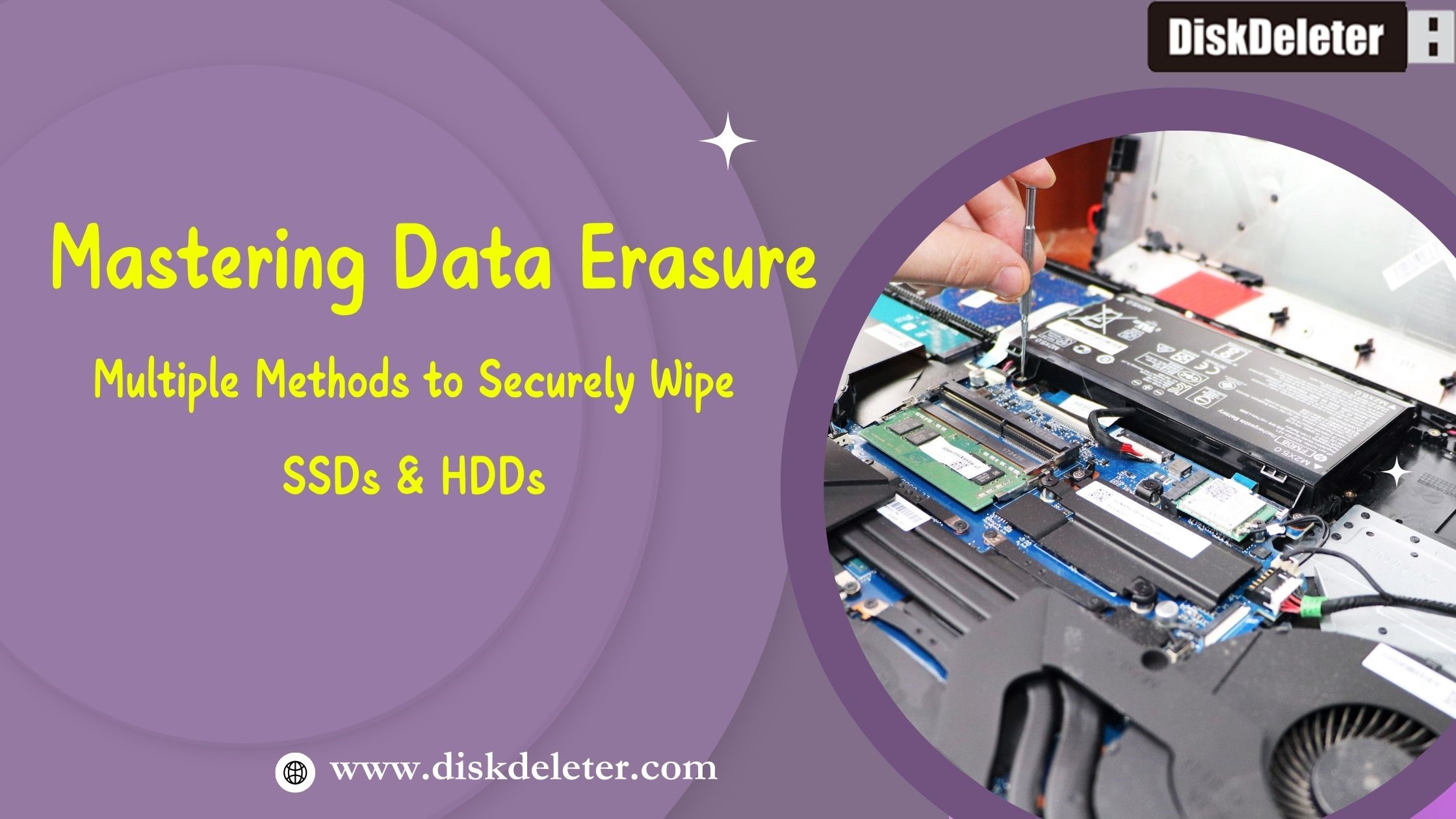
In the digital age, protecting sensitive data has become a critical concern for individuals and organizations alike. Whether you're retiring an old computer, recycling a hard drive, or transferring ownership of a storage device, simply "deleting" files is far from sufficient. To truly protect sensitive data from recovery and misuse, it is essential to use multiple data sanitization methods. Here's why relying on just one approach is inadequate—and how combining methods provides better assurance.

Science and Analytics Behind Secure Data Erasure
Despite the convenience of “one-click” wipe functions, scientific studies prove they’re far from secure. Research from the University of California, San Diego, revealed that up to 60% of deleted files could be recovered using basic tools, as standard deletion methods only remove file system pointers — not the actual data. This issue is compounded by data remanence, where residual data remains on storage devices even after attempted erasure. The challenge is more significant with SSDs, where features like wear levelling prevent full overwrites. A UCSD study in 2011 showed that only 4 out of 14 files were effectively erased on SSDs using standard overwrite techniques, highlighting the need for specialized secure erasure protocols.
- Single Methods Can Be Incomplete
Most people believe that deleting a file or formatting a drive removes its contents. These actions often only remove the references to the data in the file system. The actual data remains on the drive until it is overwritten or otherwise securely destroyed. This makes deleted data easily recoverable with basic forensic tools.
For example:
- Simple deletion (moving files to the Recycle Bin or Trash) leaves data intact.
- Formatting (quick format) clears the file table, but not the data itself.
If only one such method is used, a malicious actor could recover significant portions of supposedly deleted information.
- Different Media Require Different Techniques
Not all storage is built the same.HDDs are magnetic and respond differently to erasure than SSDs, which use flash memory and require specialized commands to target reserved blocks and firmware-based caches. Overwriting an HDD multiple times is typically effective. On SSDs, data may be relocated within the chip, so overwrite techniques may miss actual storage locations. Therefore, using a combination of methods tailored to the storage medium is necessary to ensure thorough erasure.
- To Defend Against Human or Software Errors
Even well-tested deletion tools can fail due to human oversight or technical issues. A single error—such as failing to target a hidden partition or misidentifying the drive—could leave residual data behind. By combining data deletion methods, you reduce the risk that any one point of failure compromises the entire process.
- Compliance & Legal Requirements Demand More
Data protection laws and regulations such as HIPAA, GDPR, PCI-DSS, CCPA (California) mandate secure data destruction procedures for personal and sensitive data. Many of these standards recommend or require multi-step sanitization to prevent data breaches. Using multiple deletion methods helps demonstrate due diligence and compliance with data protection laws.
- Peace of Mind Comes from Proven Assurance
For IT managers, asset managers, and data privacy professionals, knowing that a device has passed multiple layers of military-grade erasure methods means peace of mind—something no basic tool can truly offer. Whether you're disposing of personal health records, financial data, or proprietary business information, a layered approach to data removal ensures that your digital is securely removed and not accessible.
Conclusion
Sensitive data is persistent and surprisingly resilient. A single method of data deletion may leave loopholes that can be exploited by those with malicious intent. While most solutions rely on 1–2 erasure techniques, DiskDeleter supports 16 wipe methods which are internationally recognized and certified . For more detailed information, please visit DiskDeleter, which offers a wide range of information.
© 2025 Jungle KK - Powered By Knowledge Fortune
